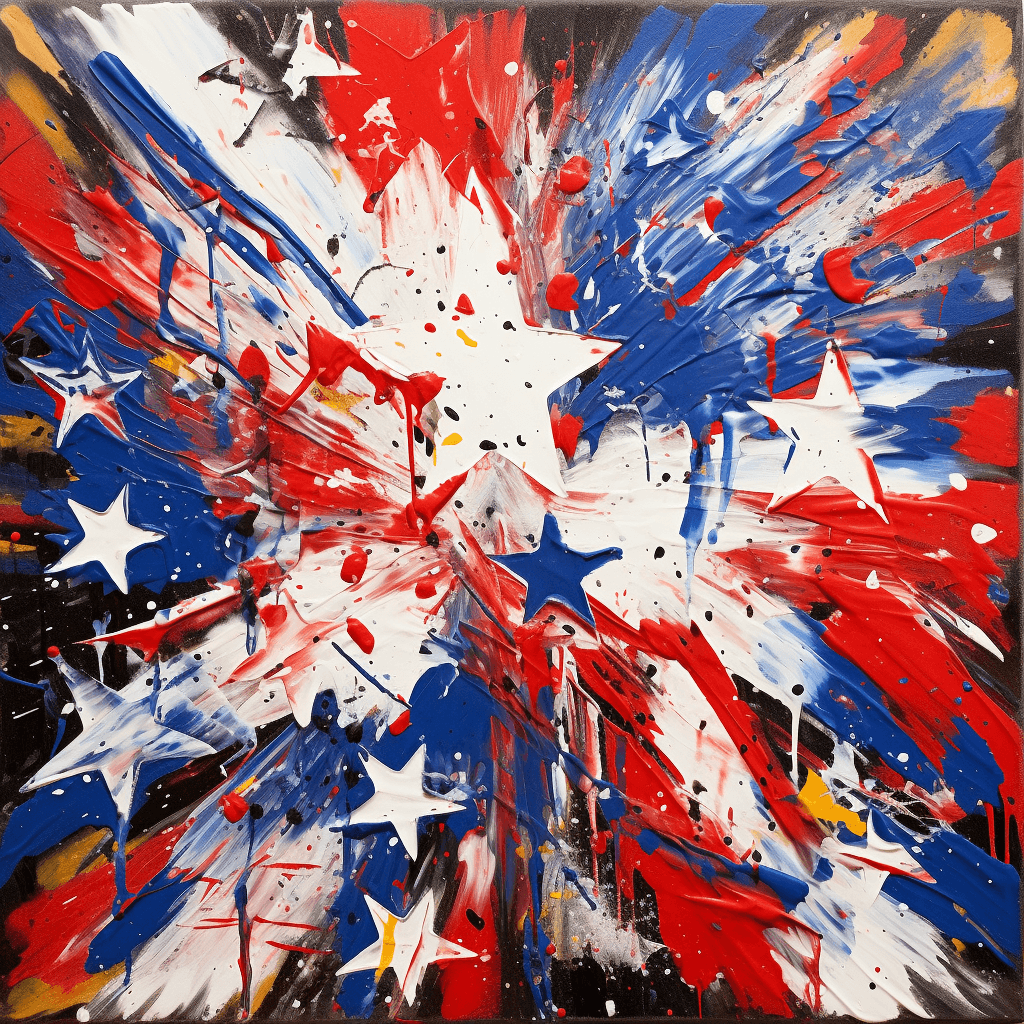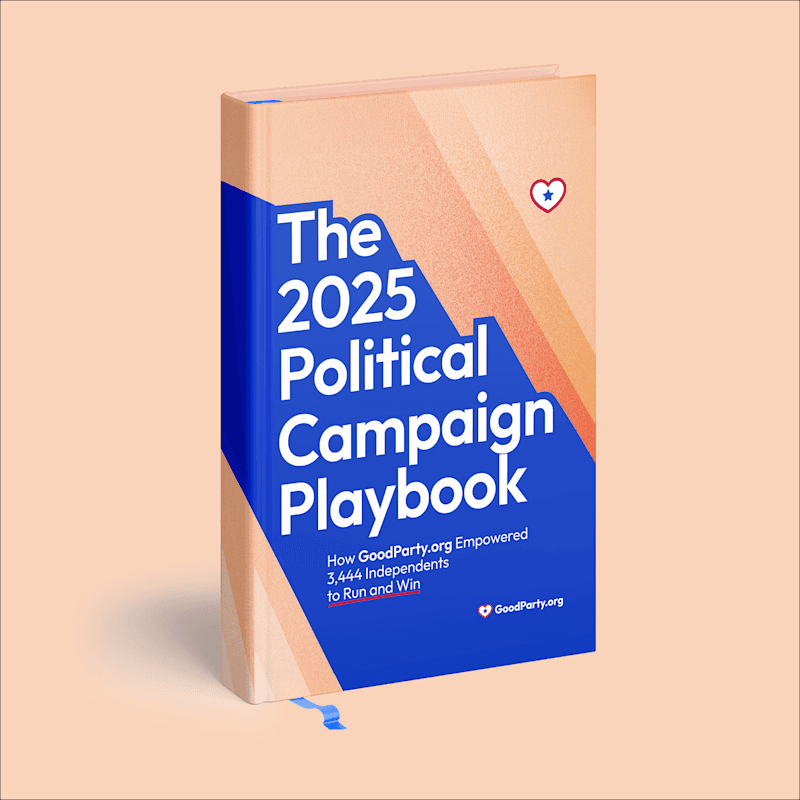
How Understanding the Two-Party System Informs Strategies for Independent Political Campaigns
“Learn the rules like a pro so you can break them like an artist.” ~ Pablo Picasso
In the broad landscape of American politics, one prominent feature stands out: the dominance of a two-party system that allows the Democratic and Republican parties to hold sway over the political arena in the United States. The roots of the American duopoly trace back to our nation's early years, which makes viable challenges by independent candidates nearly impossible to achieve.
What is the two-party political system in America, and how can we break the stranglehold of party politics to initiate true change?
Join us as we will delve into the history of the two-party political system in America, examine its advantages and disadvantages, and explore its unintended consequences and profound impact on governance. Perhaps by understanding how we arrived here, we can map effective strategies for independent political campaigns and devise actionable solutions for a more functional democracy.
A Brief History of the Two-Party System
The Federalists and the Democratic-Republicans, led by Alexander Hamilton and Thomas Jefferson, respectively, were the first prominent political parties. However, our current system was not a design for dominance of a two-party system by the Founding Fathers, but rather an organic development driven by ideological differences.
Rooted in the circumstances and goals of their times, the evolution of our American political parties timeline looks like this:
1790s: Emergence of the First Parties. Basically, the Federalists favored a strong federal government and close ties with Britain, while the Democratic-Republicans advocated for states' rights and a more agrarian society.
Early 1800s: Collapse of the Federalists. After the War of 1812, the Federalists faded away, leaving the Democratic-Republicans as the dominant party. This was followed by a brief Era of Good Feelings from 1817 - 1825 that was marked by the one-party rule of James Monroe's presidency.
1830s: Birth of the Whig Party. Opposition to President Andrew Jackson led to the formation of the Whig Party, temporarily challenging the Democratic dominance.
1850s: Rise of the Republican Party. The Republican Party emerged as an anti-slavery force, eventually leading to Abraham Lincoln's election and the Civil War.
Modern-Day Democrats and Republicans. The Democratic and Republican parties as we know them today began to take shape in the late 19th century and solidified in the 20th century. Social factors that came to a head during the civil rights era culminated in the Southern Strategy devised by Barry Goldwater and perfected by Richard Nixon.
This ideological shift informs a cultural divide between the two major political parties that has reached critical mass in the first quarter of the 21st century. Bipartisanship in American politics has become a dirty word.
Pros and Cons of the Two-Party System
The two-party system has its share of advantages, which contribute to its enduring dominance in American politics:
Some perceived pros of the two-party system are:
Political Stability: The system provides a degree of stability by preventing the proliferation of small, fragmented parties that can lead to political chaos.
Clear Choice for Voters: It simplifies choices for voters, making it easier for them to align with parties that broadly represent their views.
Efficiency in Governance: Two major parties can make decisions and pass legislation more efficiently than a multi-party system, fostering governance.
Accountability: It encourages parties to hold each other accountable and supports a more robust system of checks and balances.
However, the apparent advantages of two-party dominance are increasingly outweighed by the negatives. For example, a comparison of US and multi-party systems demonstrates that the latter leads to more effective coalition building and less gridlock.
Some cons of a two-party political system include:
Limited Choice: Voters often feel constrained by having only two major options. This leads to frustration and a sense of inadequacy in representing diverse views. As a result, we tend to vote against a person or party rather than voting for something substantial.
Polarization: The two-party system can foster extreme partisanship, making it challenging to find common ground and pass bipartisan legislation.
Influence of Money: With fewer parties, special interest groups have disproportionate influence on the political process.
Lack of Representation: Minor parties and independent candidates struggle to gain traction and representation, potentially silencing valuable voices and stifling a true diversity of views..
Due to the way it’s structured and complicated by the manufactured outrage that diverts public attention, the two-party system profoundly shapes the way governance occurs in the United States. As a result, there are many challenges faced by third-party candidates in US elections.
Barriers to Independent and Third-Party Challengers in U.S. Elections
The consolidation of political power into two major parties in the United States is influenced by several structural barriers that make it difficult for third parties to gain traction and compete effectively.
These structural barriers include:
Winner-Takes-All Electoral System: In most U.S. elections, the candidate who receives the most votes wins the entire representation for that constituency or state. This "winner-takes-all" or first-past-the-post system discourages voters from supporting third-party candidates, as doing so may result in "wasting" their votes on candidates who have little chance of winning. As such, it incentivizes strategic voting for one of the two major parties.
Electoral College: The electoral college influence supports further political polarization in America and propels minority outlooks into political dominance in the U.S. As it is used in presidential elections, the Electoral College exacerbates the two-party system.
Candidates typically compete for electoral votes on a state-by-state basis, and in most states, the winner takes all the electoral votes. This encourages presidential candidates to focus their efforts and resources on swing states and build broad-based coalitions that align with the two-party structure.
Duverger's Law: Duverger's Law is a political science principle that suggests that in a single-member district electoral system (like the U.S.), over time, it is likely that a two-party system will emerge. This results in a perception that strategic voting by citizens who tend to support one of the two major parties is necessary rather than "wasting" their votes on smaller parties that have less chance of winning.
Ballot Access Laws: States have varying and often restrictive ballot access laws that third-party candidates must navigate to appear on the ballot. These laws often require collecting a significant number of signatures, meeting stringent deadlines, and sometimes paying substantial fees. The complexity and expense of these requirements deter third-party and independent candidates from competing.
Gerrymandering: Gerrymandering, the practice of drawing electoral districts in a way that favors one party over others, can make it difficult for third parties to win at the district level. Districts are often designed to be safe for one of the major parties, reducing the competitiveness of elections.
Campaign Finance Laws: Major parties have developed established fundraising networks that provide access to significant financial resources, many of which are from special interest groups. Campaign finance laws that heavily regulate contributions, coupled with the influence of super PACs, can create fundraising advantages for major party candidates. Third-party candidates often struggle to raise the funds needed to mount competitive campaigns.
Media Coverage and Debates: The media tends to focus on the two major parties and their candidates, providing them with more attention and coverage. Additionally, third-party candidates often face barriers to inclusion in televised debates, which are crucial for reaching a broad audience and gaining credibility.
Political Primaries: The primary system in the United States, where major parties select their candidates for general elections, can work against third-party candidates. Major parties have well-established primary processes, while independents often lack the infrastructure to hold competitive primaries.
Historical Precedent and Cultural Norms: Americans have grown accustomed to a two-party system throughout the nation's history. Cultural norms and historical precedent reinforce the idea that a vote for a third-party candidate is unlikely to result in electoral success. This perception can deter voters from supporting alternative parties.
These structural barriers collectively contribute to the dominance of the two-party system in the United States by making it more challenging for third parties to gain a foothold in the political landscape and compete on an equal footing with the major parties
Many believe that the best solutions to improve the electoral system involve finding ways to break the two-party dominance in U.S. politics. We can start by changing minds and attitudes about “third-party spoilers.”
Reimagining the Political Landscape for the America of Tomorrow
In some ways, a history of American political parties is the history of America itself. While third parties and independent candidates exist, they face significant challenges in gaining widespread support and influence within this framework.
The good news is that the dynamic is changing.
According to a Gallup poll, nearly 50% of Americans identify as independents. But, even that faction is divided, with about 42% identifying more with Republicans and 42% percent leaning Democrat.
Rather than creating a diverse political landscape, our differences are exploited and leveraged by so-called political leaders. Major issues are divided by party and ideology. The Republican position on immigration is a concern for those who lean right, while the Democrat’s stance on healthcare draws more support their way. Third-party views on climate change dominate the discussion among independent candidates and their followers.
Both sides of the duopoly feel that the other is completely out of touch with the wishes and needs of the American public. The one thing they seem to agree on is the danger of third-party candidates to the status quo.
The emerging impact of third parties in past and current elections at all levels of government is due to the perception of an unbridgeable cultural divide - which the establishment parties are more than happy to capitalize on - that results in a dysfunctional government that is hopelessly indebted to special interests and less interested in governing.
These factors present opportunities for independent and third-party candidates to create inroads to the public consciousness and break the two party hegemony that dominates American politics.
You can become part of the solution to corruption and ineffective governance by supporting viable independent candidates in your community or running for office yourself. You’ll find all of the tools and resources you need right here at GoodParty.org.

